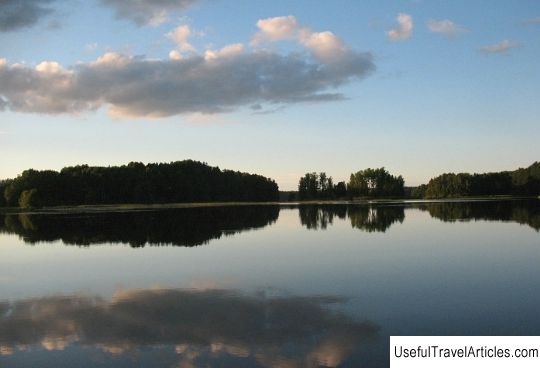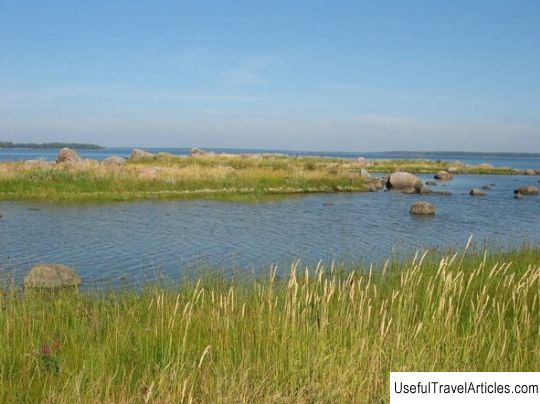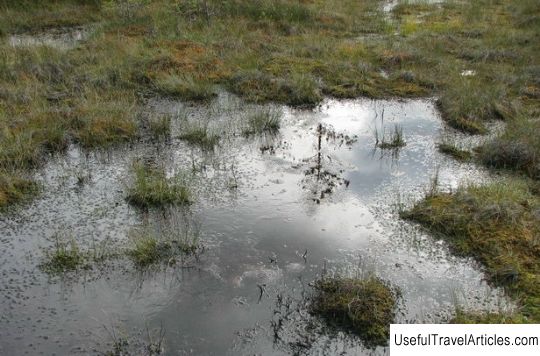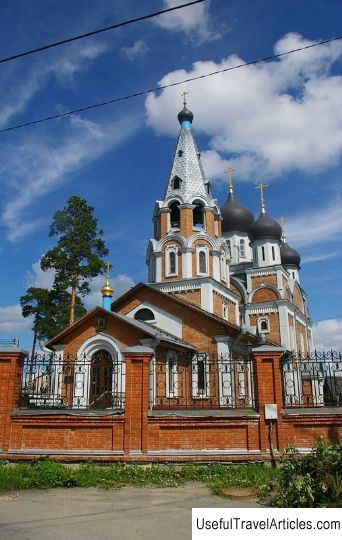Nature reserve ”Cancer Lakes” description and photos - Russia - Leningrad region: Vyborgsky district
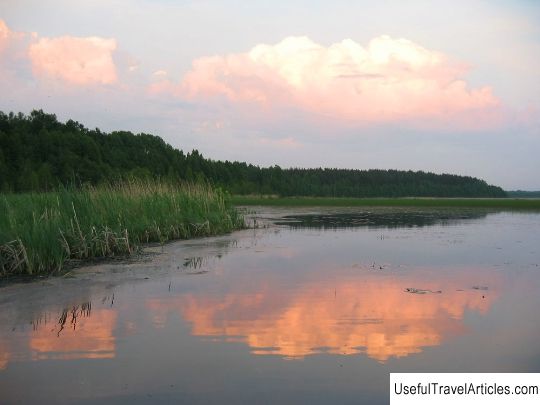
Preserve "Cancer Lakes" description and photos - Russia - Leningrad region: Vyborgsky district. Detailed information about the attraction. Description, photos and a map showing the nearest significant objects. Photo and description"Cancer Lakes" is a state nature reserve of regional importance, created in 1976. The reserve is located between the villages of Klimovo, Streltsovo and Granitnoye, 40 km southeast of Vyborg ... "Cancer lakes" occupy an area of 9.7 thousand hectares, the water area of the lakes accounts for about 600 hectares. The main purpose of creating a nature reserve is to preserve a productive complex of lowland bogs and eutrophic lakes of the Karelian Isthmus, as well as to protect migratory sites of near-water waterfowl, places of their mass nesting, spawning and feeding grounds for commercial fish. The Crayfish Lakes Wildlife Refuge is located in the center of the Karelian Isthmus in the southern part of the Baltic crystalline shield, which is covered by water-glacial deposits. The places of water bodies coincide with glacial basins and form a common system. The coastline of Bolshoy Rakovye, Maly Rakovye and Okhotnichye lakes is heavily indented and irregular in shape. The territory adjacent to the lakes is overgrown with bushes and is heavily swampy. The lakes themselves are rather shallow, the prevailing depth here is about 1 m. Powerful rafts are formed on the lakes, which gradually turn into sphagnum and grass bogs. On the shores of the lakes, lake reeds, river horsetails, reeds, reeds, broad-leaved and narrow-leaved cattails, long-leaved buttercup, cinquefoil, hedgehogs, watch, chastukha grow. Milestones are common. Among the species with floating leaves and submerged species, they are quite abundant: yellow and small egg pods, floating pond, pure white water lily, submerged hornwort, vodokras, tail, duckweed, dichotomous mulberry, the entire water column in shallow reaches is often filled with elodea. Impenetrable thickets around artificial fairways are formed by telores. Water rice is also planted here. Algae and mosses are represented in a wide variety. Black alder forests grow on the shores of the lakes. Birch forests are located on the former Finnish agricultural land. The coniferous forests of the reserve are mainly represented by green moss pine forests. The slopes and ridges between Bolshoye Rakov and Okhotnichy lakes are covered with pine forests with linden undergrowth. The herbaceous layer is represented here by the spring rank, the common ditch, and the May lily of the valley. Much smaller areas are occupied by spruce forests. On the site of the former estate of A. Kollontai in the vicinity of the village of Klimovo, introduced species are noted. Pike, ide, bream, perch, crucian carp, roach constantly inhabit and spawn in the lakes. The territory of the reserve is of the greatest value as a stopping place during migrations and nesting of waterbirds, huge flocks of which gather here during the periods of spring and autumn migrations. Here they stop for rest: barnacle and black geese, white-fronted geese and bean geese, diving and river ducks, whooper and tundra swans. On the lakes, pintail, mallard, witch, teal (whistle and cracker), broad-legged duck, tufted duck, red-headed duck, gogol and many rare species nest, such as: great bittern, gray-cheeked and red-necked toadstools, osprey, great spotted eagle, golden eagle, eagle white-tailed crane, short-eared owl, corncrake. The reserve is inhabited by: raccoon dog, muskrat, weasel, ermine, American mink, marten, polecat, wolf, elk, wild boar. For more than 100 years, Russian and Finnish researchers have been conducting scientific observations on this territory. The territory of the "Cancer Lakes" is promising for photo hunting, ecological and children's tourism, amateur fishing. The territory is a wide field for research of ornithologists, students and schoolchildren undergo practical training. Specially protected objects on the territory of the reserve include: natural complexes of lakes, places of migratory camps for near-water and waterfowl, places of their mass nesting, spawning grounds for fish; rare species of animals: osprey, big bittern, golden eagle, spotted eagle, gray crane, tundra swan, water shepherd, white-tailed eagle, corncrake; rare species of animals: crescent and chamomile grass, meadow and spring lumbago, single-leaved pulp, two-leaved lyubka, umbrella winter lover, common centipede, water rice, Omsk sedge, marsh gammarbia, small egg capsule. On the territory of "Cancer Lakes" it is prohibited: autumn hunting without special permission, spring hunting for waterfowl, winter hunting for wolves with traps and poisoned baits, making fires, fishing with fishing gear, using motor boats for Bolshoy Rakov and Okhotnichye lakes, stay on the lakes in the zone during nesting of birds, travel by vehicles.            We also recommend reading Museum-estate ”Pruzhany Palace” description and photos - Belarus: Brest region Topic: Nature reserve ”Cancer Lakes” description and photos - Russia - Leningrad region: Vyborgsky district. |
